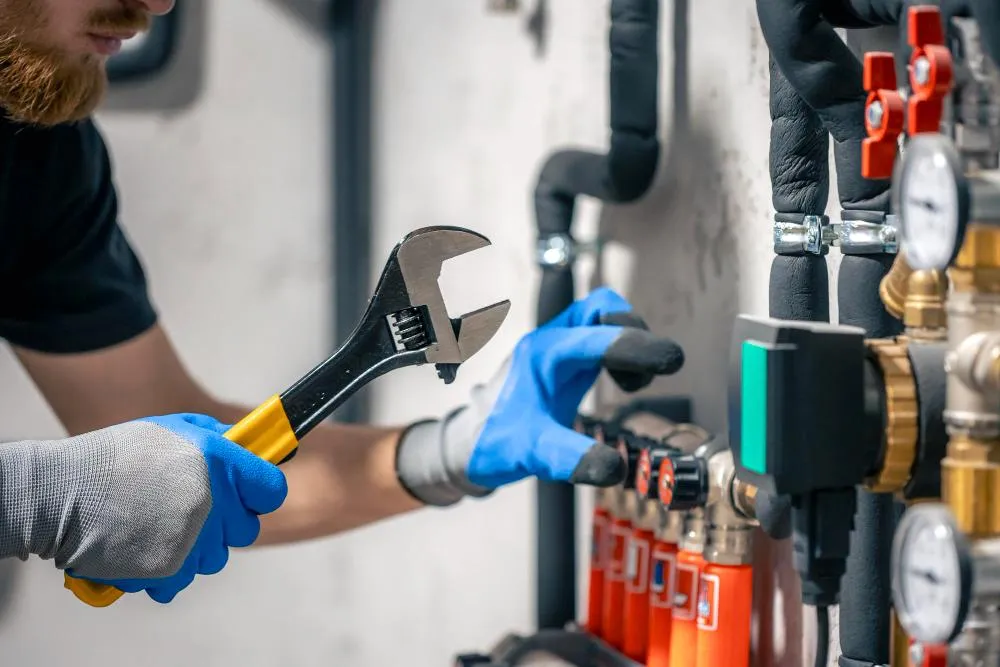
Top Pump Maintenance Tips to Avoid Flooding in Stafford Homes
A basement flood can go from a minor annoyance to a major disaster in just a few hours—especially during heavy rains or rapid snow melts common in Stafford, VA. The good news? Most flooding events caused by plumbing system failures are preventable with one often-overlooked device: your sump pump or sewer ejector pump.
Pump systems are your home’s first line of defense against water damage. But like any mechanical equipment, they require regular maintenance to work properly when you need them most. In this blog, we’ll cover the top pump maintenance tips every Stafford homeowner should know to avoid flooding, water damage, and costly repairs.
Why Pumps Are Critical for Flood Prevention
Before diving into the maintenance tips, it's important to understand how residential pumps function.
What does a sump pump do?
A sump pump is installed in the lowest part of your basement or crawl space. It collects groundwater that accumulates around your foundation and pumps it safely away from the home.
What about a sewer ejector pump?
For homes with basement bathrooms or laundry rooms below the level of the main sewer line, a sewer ejector pump lifts wastewater upward so it can exit through your home’s plumbing system.
If either pump fails during a storm or heavy water use, the result can be a soaked basement, mold growth, or even sewage backup.
Top Maintenance Tips for Your Pump System
Preventing pump failure starts with regular upkeep. Below are key actions you can take throughout the year to make sure your pump is always ready.
1. Test Your Pump Regularly
Don’t wait until the next downpour to find out your pump isn’t working.
Every 2–3 months, pour a bucket of water into the sump pit.
Watch to see if the pump activates and clears the water promptly.
If nothing happens, or if the pump runs but doesn’t drain the water, it needs service or replacement.
2. Clean the Pump and Pit
Over time, pumps can collect mud, debris, gravel, and sludge that restricts water flow.
Unplug the pump and remove any debris from the sump pit or ejector basin.
Clean the pump inlet screen or grate with a brush.
Rinse off visible buildup on the pump housing.
Perform this cleaning at least once every 6 months, or more often if your pump is in a high-use area.
3. Inspect the Discharge Line
Your pump’s discharge line carries water out of your home. If it’s clogged or frozen, your pump won’t work effectively.
Check the line for blockages or standing water.
In winter, ensure the outlet is protected from ice.
Make sure the pipe is sloped correctly and leads water far from your foundation.
A blocked discharge pipe can cause a backup even if your pump is running perfectly.
4. Check the Float Switch and Power Source
The float switch triggers the pump to turn on when water rises. If it gets stuck or disconnected, the pump won’t activate.
Make sure the float moves freely up and down.
Verify that your pump is plugged into a dedicated GFCI outlet.
Consider using a surge protector or battery backup for storm reliability.
Power loss during a storm is a common cause of pump failure—always have a secondary plan.
5. Test or Replace the Battery Backup
If your home has a battery backup system, test it regularly to ensure it still holds a charge.
Press the test button if available.
Disconnect main power briefly to simulate an outage and observe backup activation.
Replace batteries every 2–3 years or as recommended by the manufacturer.
A backup system gives you protection during power outages—don’t assume it’s ready without checking.
6. Schedule Annual Professional Maintenance
While you can handle many maintenance steps yourself, a licensed plumber can offer a deeper inspection of pump performance and overall drainage setup.
An annual visit may include:
Pump output testing
Float calibration
Alarm system checks
Backup power system evaluation
Preventative cleaning and part replacement
If your home has a history of water intrusion, professional maintenance is especially important before wet seasons.
Bonus Tip: Consider a Pump Alarm System
Pump alarm systems alert you when the water level rises too high or if the pump fails to activate. These alarms give you time to respond before damage occurs.
Smart systems can even send alerts to your phone so you can take action remotely—ideal for vacation homes or weekend travel.
Conclusion
Stafford homeowners know that when it rains, it pours—and your sump or sewer ejector pump needs to be ready for it. Routine maintenance is your best defense against unexpected basement flooding and water damage.
By testing your system, cleaning the pump and pit, inspecting discharge lines, and investing in professional checkups, you’ll greatly reduce the risk of flooding during storm season.
Don’t wait for your pump to fail before taking action. Keep your system maintained, your backup power ready, and your basement dry—year-round.